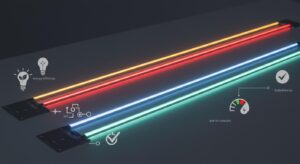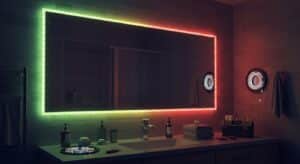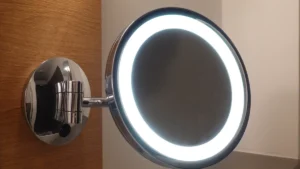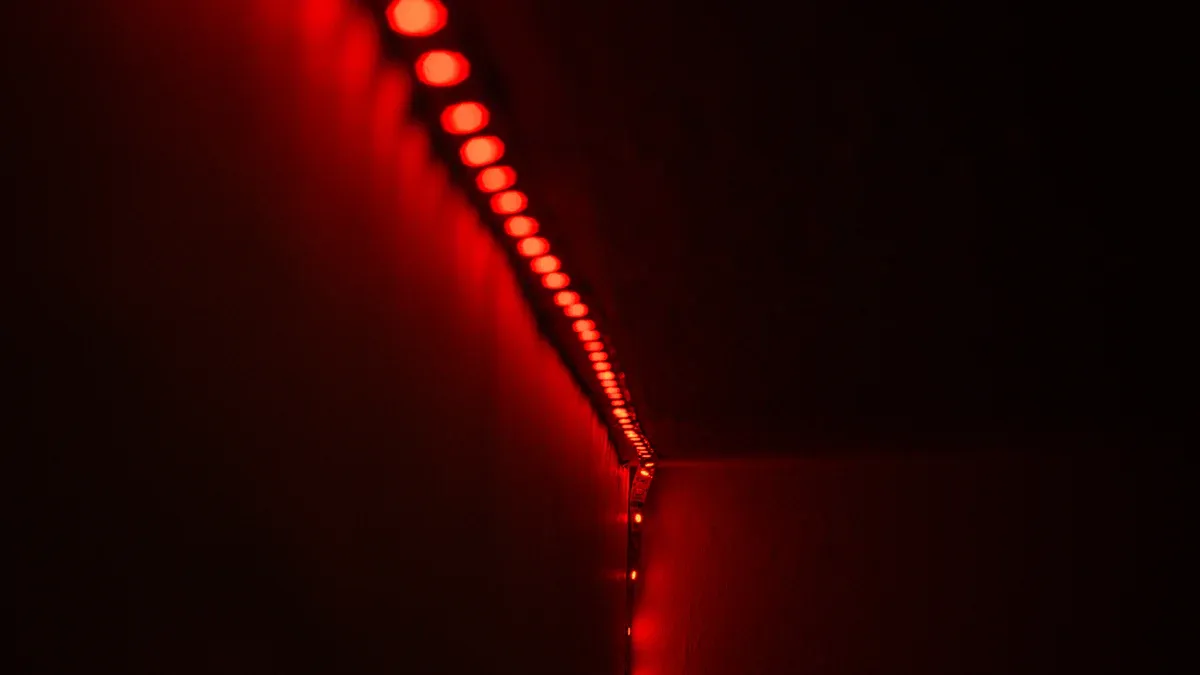
Have you ever wanted to make cool lighting effects? LED modules can help! These small, handy parts are ready-to-use lights that shine bright and save energy. You can use them to create glowing decorations or fun art projects.
When you pair Arduino with LED modules, the possibilities are endless. Arduino helps you control LEDs easily and make your ideas real. It’s also great for beginners! Whether you’re just starting or learning advanced Arduino tricks, these tools are simple and exciting to use.
LED modules are becoming very popular. Here are some facts:
The LED Modules market is growing fast at 11.3% yearly.
By 2033, it could reach USD 127,987.7 million.
In 2023, it’s already worth USD 43,744.4 million.
So, why not try LED module Arduino projects and create something awesome?
Key Takeaways
LED modules save energy and are very useful. They are great for decorating homes or making cool art projects.
Arduino makes controlling LED modules easy. Beginners can quickly learn to code and make light animations, so it works for everyone.
Picking the right LED module is important. Think about type, size, and power to fit your project and make it work well.
Understanding LED Modules
What Are LED Modules?
LED modules are small units with one or more LEDs. They are made to be easy to use without needing extra parts or tricky wiring. Some even come with built-in resistors, connectors, or waterproof covers, depending on how they’re used.
Why are LEDs special? They are super efficient and last long. Unlike old bulbs, LEDs light up instantly and don’t have fragile parts. They are solid and can handle bumps or shakes. Some can work for up to 50,000 hours. Instead of breaking suddenly, they slowly get dimmer, so you know when to replace them.
Here’s how LEDs work:
Light is made through a process called electroluminescence. This happens when electrons meet in a special material.
The light’s color depends on the material’s energy properties.
LED modules are useful for many things, like home decor or wearable gadgets. They are also important in addressable LED strips, which let you control each LED for cool effects.
Types of LED Modules (Single-Color, RGB, Addressable)
Not all LED modules are alike. You need to pick the right one for your project. Here are the main types:
Single-Color LED Modules
These give off one fixed color, like red, green, or white. They are simple and great for basic uses, like indicator lights or single-color backlighting. They are cheap and easy to add to circuits.RGB LED Modules
These combine red, green, and blue LEDs in one unit. By changing the brightness of each color, you can make many colors. They are great for displays, stage lights, or smart lighting. For example, you can make a sign that changes colors during the day.Addressable LED Modules
These are the most advanced. Each LED has its own tiny controller. This lets you program each LED to show different colors or effects. They are perfect for creative projects like art displays or fancy home lighting.
Here’s a quick comparison of single-color and RGB LED modules:
LED Type | Structure Description | Applications | Performance Characteristics |
|---|---|---|---|
RGB SMD LEDs | Combines red, green, and blue light sources | Displays, stage lighting, smart lighting systems | Offers a wide range of colors through brightness adjustment |
Single-color SMD LEDs | Contains only one fixed color light source | Indicator lights, monochrome backlighting | Simpler circuit design, lower production costs |
Think about your project’s needs when choosing. Do you want simple lighting? Or do you want programmable effects? If you want flexibility, addressable LED strips are the best choice.
How LED Modules Work with Arduino
Using LED modules with Arduino gives you many options. Arduino is like the brain of your project. It helps you control LEDs easily. You can turn one LED on and off or make cool animations with addressable strips.
Here’s how it works:
Wiring: Connect the LED module to the Arduino board with jumper wires. Make sure the connections are correct, as LEDs only work one way.
Programming: Use Arduino’s coding tools to write simple programs. For example, the
digitalWritefunction can turn an LED on or off.Power Management: Some LED modules need more power than Arduino can give. In that case, use an external power source.
A study showed most people find basic Arduino tasks, like digitalWrite, easy. But harder tasks, like using conditions, take practice. Don’t worry if you’re new—there are guides and libraries, like FastLED and Adafruit NeoPixel, to help.
Addressable LED strips are especially fun. Each LED has its own controller, so you can program them one by one. Want a rainbow effect? Or lights that move with music? Arduino makes it all possible.
Choosing the Right Components
Picking the Best LED Module for Your Project
Choosing the right LED module is very important. Think about these factors before deciding:
Types of LED Strips: Pick between addressable or non-addressable strips. Addressable strips let you control each LED separately. Non-addressable strips light up all at once.
Density: Look at how many LEDs are in one meter. More LEDs, like 144 per meter, give smoother light but use more power.
Voltage Options: Choose 5V or 12V strips. A 5V strip saves energy but may lose power over long distances.
Also, check for efficiency, heat control, and color quality. For indoor lights, pick a module with high CRI (Color Rendering Index) for natural colors. Outdoor projects need waterproof modules.
Tip: Match the LED module to your project’s needs. Planning ahead saves time!
Picking the Right Arduino Board
The Arduino board is the brain of your project. Choosing the right one is key. Here’s a quick guide to popular boards:
Feature | What It Means |
|---|---|
Power Use | Great for battery-powered projects needing long life. |
Speed | Needed for fast animations or real-time effects. |
Memory | Important for complex patterns or storing lots of data. |
IO Ports | Decides how many LEDs or sensors you can connect. |
Size | Small boards are better for portable or tiny designs. |
WIFI/Bluetooth | Best for wireless control or smart home setups. |
Logic Levels | Make sure voltage matches your LED strip to avoid damage. |
For most projects, Arduino Uno or Nano works well. For wireless control, try Arduino Nano 33 IoT or ESP32.
Power Supply Tips for LED Strips
A good power supply keeps your LED strip working well. Follow these steps to find the right one:
Check the voltage of your LED strip (usually written on it).
Find out how much current one LED uses. For example, if 3 LEDs use 60 mA, one LED uses 20 mA.
Multiply the current by the number of LEDs in your strip. For 60 LEDs in 1 meter, the total is 1.2 amps (60 x 20 mA).
Pick a power supply with slightly more current than needed. For 1.2 amps, choose a 2-amp supply.
Note: Always match the power supply voltage to your LED strip. The wrong voltage can harm your LEDs or Arduino board.
Connecting LED Modules to Arduino
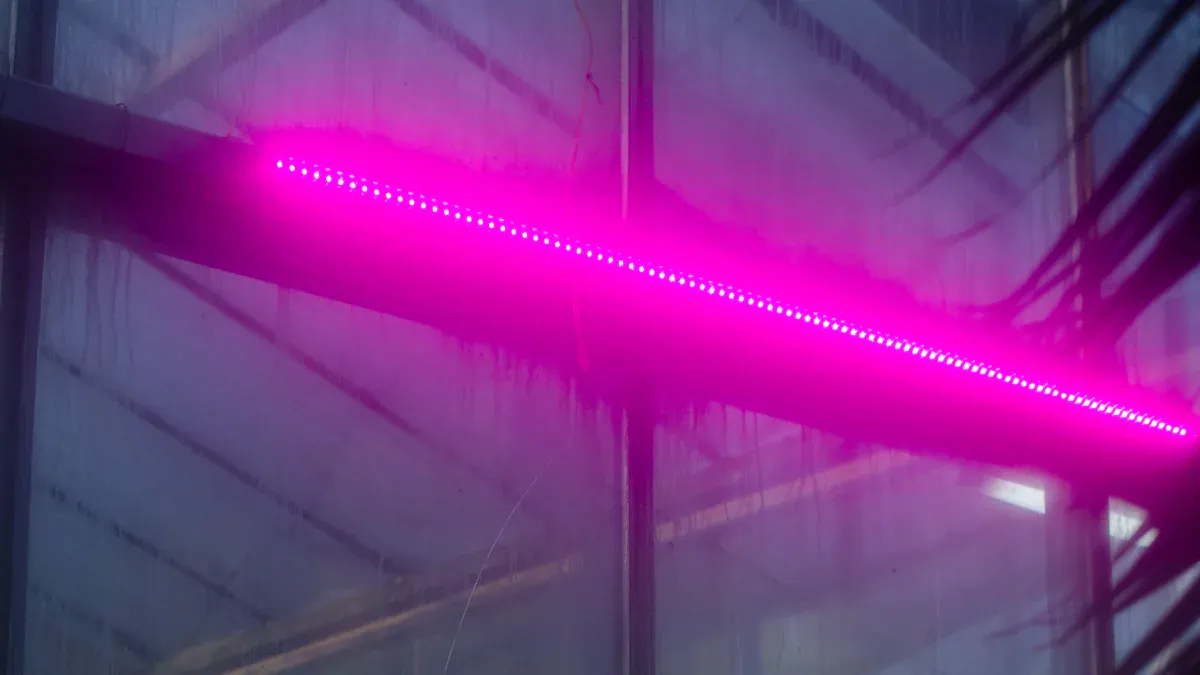
Step-by-Step Wiring Instructions
Hooking up an LED module to Arduino is simple. Follow these steps:
Find the LED pins: RGB LEDs have four pins—Common, R (red), G (green), and B (blue).
Connect the Common pin: Link the Common pin to the Arduino’s GND (ground).
Use resistors: Add resistors to R, G, and B pins unless your module has built-in ones.
Attach color pins: Connect R, G, and B pins to three Arduino digital pins.
Set pins in code: Assign R, G, and B pins in your program.
Switch pins to OUTPUT: Use
pinModein your code to set them as OUTPUT.Control colors: Adjust brightness with
analogWriteto create different colors.
This method works for single-color or RGB LEDs. For addressable LED strips, wiring is slightly different but follows the same idea.
Ensuring Proper Power Management
Good power management keeps your LED strip working well. Here are some tools and tips:
Feature | What It Does |
|---|---|
LED Drivers | Manage LED power efficiently, though they cost more. |
PWM Signal Generation | Chips like TLC5940 create PWM signals, reducing Arduino’s workload. |
Free-Running PWM Engine | DM63x chips have built-in PWM engines, saving Arduino timers and simplifying connections. |
Multiplexing Capability | Some drivers handle multiplexing better than others. |
For big LED strips, use an external power source. Calculate the total current needed and pick a supply with slightly more power. This avoids overheating and keeps everything stable.
Common Mistakes to Avoid
Avoid these mistakes when working on your project:
No resistors: Without resistors, LEDs can burn out. Check if your module already has them.
Wrong wiring: Make sure connections are correct. LEDs only work one way.
Weak power supply: A weak supply causes flickering or damages your Arduino.
Overloading Arduino: Don’t power big LED strips directly from Arduino. Use an external power source.
By following these tips, you’ll avoid problems and enjoy building your project!
Programming LED Modules with Arduino
Using Libraries Like FastLED and Adafruit NeoPixel
Controlling a led strip with Arduino is easy with libraries. FastLED and Adafruit NeoPixel are great tools for this. They make creating cool led strip animations simple. These libraries handle the hard parts, so you can focus on your ideas.
FastLED is a strong library that works with many ws2812b led strip types. It supports Neopixel, WS2801, WS2811, and more. It’s fast and efficient, perfect for smooth animations. Here’s why it’s useful:
Feature | Description |
|---|---|
Compatibility | Works with Neopixel, WS2801, WS2811, and other LED types. |
Performance | Faster math and memory functions than standard libraries. |
Community | Big user group sharing tips and projects. |
Documentation | Clear guides for setup and troubleshooting. |
Adafruit NeoPixel is another good option. It’s easy for beginners and works well with ws2812b LEDs. Both libraries have guides and examples to help you start. Check out Arduino Libraries Documentation and FastLED Library for more details.
Tip: If you’re new, try Adafruit NeoPixel first. Once you learn the basics, switch to FastLED for advanced features.
Basic Coding for LED Control
Let’s learn how to control a led strip with Arduino. You’ll write some arduino code to make your led module arduino project work. It’s not as hard as it seems!
Here’s a simple example using FastLED:
#include <FastLED.h>
#define LED_PIN 6
#define NUM_LEDS 30
CRGB leds[NUM_LEDS];
void setup() {
FastLED.addLeds<WS2812B, LED_PIN, GRB>(leds, NUM_LEDS);
}
void loop() {
for(int i = 0; i < NUM_LEDS; i++) {
leds[i] = CRGB::Red; // Turn LED red
FastLED.show();
delay(50); // Wait 50ms
leds[i] = CRGB::Black; // Turn LED off
}
}
This arduino source code sets up a ws2812b led strip with 30 LEDs. It lights each led in red, one at a time, creating a chasing effect. You can change the color or speed by editing the code.
Note: Make sure the number of LEDs in your led strip matches the
NUM_LEDSvalue in the code. This ensures everything works correctly.
For more help, look for tutorials on the FastLED library. They explain setup, coding, and key functions in simple steps.
Arduino and WS2812B LEDs Examples
Now that you know the basics, let’s see some fun arduino and ws2812b leds examples. These projects show what you can do with ws2812b led strip programming:
Interactive LED Coffee Table: This uses 45 ws2812b LEDs, sensors, and Bluetooth. An Arduino Mega controls it, lighting up when objects are placed on the table. It’s a mix of art and tech.
Basic LED Control: A simple project with 20 ws2812b LEDs using FastLED. It shows how to set color, make animations, and adjust brightness.
LED Strip Animations: Use FastLED to create patterns like rainbows, waves, or sound-reactive effects. These turn your led strip into a light show.
These examples show how Arduino and ws2812b LEDs can create amazing projects. Whether it’s a light display or interactive art, the right code and creativity make it possible.
Pro Tip: Start with simple projects like Basic LED Control. Once you’re confident, try advanced led strip animations to improve your skills.
Creative Project Ideas
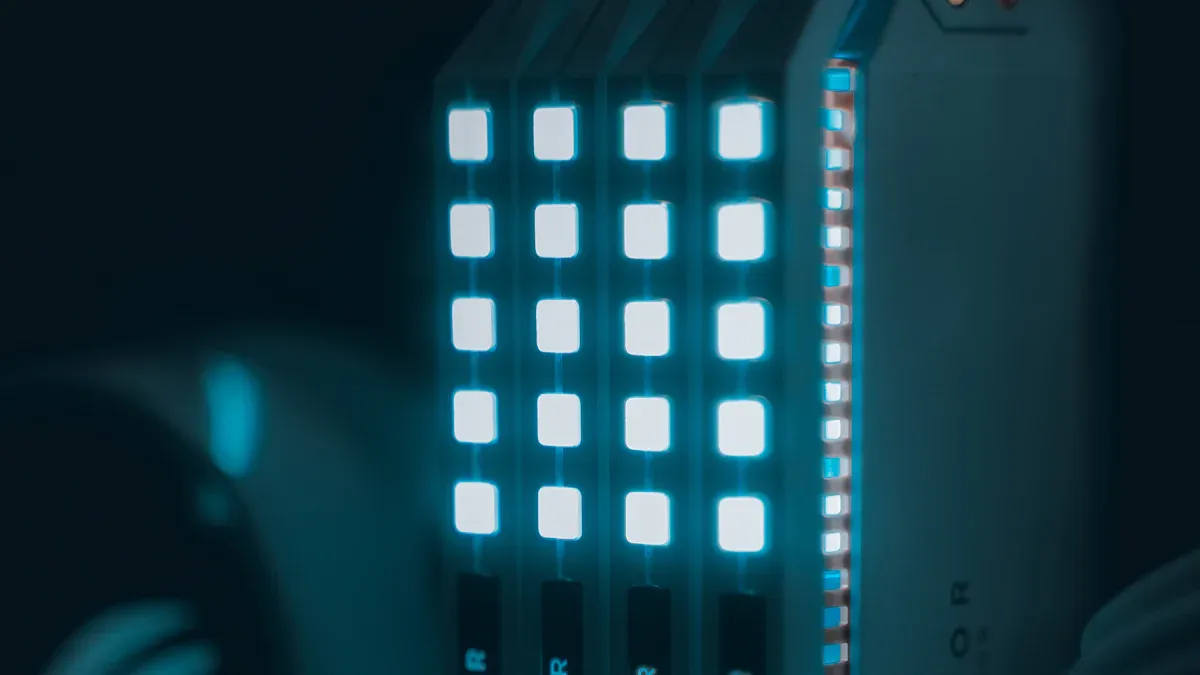
Home Decor Lighting with LED Strips
LED strips can change how your home looks. They are bendable, save energy, and are simple to set up. Use them under kitchen cabinets for a modern glow. Place them behind your TV for a cozy movie night. They also add style to living rooms or bedrooms as accent lights.
People love how LED strips improve their home’s feel. They are affordable and can match any design. Want a warm and comfy space? Or a bright and fun room? LED strips can do both. Plus, they use less electricity, which saves money!
Wearable LED Projects
Want to shine at a party or festival? Wearable LED projects are a fun way to stand out. Make glowing clothes, hats, or shoes with LED strips and Arduino. You can even program them to light up with music or change colors when you move.
These projects are not just fun but also teach you about electronics. Start with a simple LED bracelet. Then try bigger designs like glowing costumes. The options are endless, and you’ll grab everyone’s attention!
Interactive Art Installations
Interactive art projects are super creative. With LED strips and Arduino, you can make art that reacts to touch, sound, or motion. For example, an LED coffee table can light up when you put something on it. It’s fun and exciting to see in action.
These projects are great for events, galleries, or your home. They mix art and technology to create something special. With some coding and creativity, you can make amazing designs that people will remember!
You now know the basics—what LED modules are, how to choose parts, connect them, and program with Arduino. It’s time to start building! Make a glowing light for your room or a fun art project. Arduino is simple to use. Try new ideas, have fun, and let your creativity glow!
FAQ
How can I safely power long LED strips?
Use a power supply that matches the strip’s voltage. Connect power at several points to avoid overheating or voltage drops.
Is it possible to control more than one LED strip with Arduino?
Yes, you can! Use different pins for each strip or link addressable strips together. Libraries like FastLED help you manage multiple strips easily.
How do I fix flickering LEDs?
Check your wiring and power supply first. Make sure connections are tight and the power source gives enough current. Flickering often means the power supply is too weak.
Tip: Always test your code and wiring before turning on your project. It prevents mistakes and keeps your components safe!
See Also
Selecting the Perfect LED Light Module for Your Needs
Improving Sign Board Illumination with LED Modules
An Introductory Guide to Practical Uses of LED Modules
Exploring RGB LED Modules and Their Future Applications
Installing LED Module Lights for Channel Letter Signage
